This version of the popular takeout dish has lots of chicken and veggies with true Thai flavor. Follow the easy cooking method for a delicious dish that will transport you right to Thailand, all in just 35 minutes.

This Is How It Tastes in Thailand
I've spent a lot of time in Thailand, and love the food - but it took a while for me to warm up to cashew chicken. Honestly, I didn't try it for a long time because I just didn't see the appeal.
And then I tried it. And loved it. And now it's one of my all-time favorite Thai dishes.
So on my last trip I went to a Thai cooking class to learn how to make a true authentic version at home. This recipe is based on that version.
The teacher emphasized that "there is not 'right' way to cook Thai food" - so even if this dish tastes truly authentic to me, it might not to you. And that's okay!
She also said to "use what you have". Thai food doesn't have to rely 100% on fish sauce, and you don't have to have that specialty Thai sauce you can only get in that one supermarket far, far away. Instead, you can often use more common components that add similar flavors. You'll see that for this reason, I don't just use Thai ingredients - but also Japanese, and Chinese...
You'll also notice this cashew chicken is not "sticky" in the way many American or European versions are. That's because I've never had sticky cashew chicken in Thailand, so for me that does not taste "authentic". But if that's the kind you're after, then there are plenty of good recipes for it!
For me, this tastes like that first dinner on the beach in Thailand after traveling for a full day and night just to get there. And that's something I love being able to cook up right in my own kitchen!
Start with This and Make It Your Own

Choose Your Own Veggies
In the spirit of "make it your own" I encourage you to dare use the veggies you prefer for this dish. I always use carrots for the crunch, and cauliflower I've seen quite often in versions in Thailand. Mushrooms are less common, but you'll sometimes get them, and I just love the flavor they add so they're a must for me.
You can switch it up by for example using yellow onions or adding broccoli, bell peppers or zucchini. Use what you have, and what you like!
About the Sauces

Above are shown the exact brands of sauces I used.
Soy sauce (Kikkoman) & fish sauce (Squid Brand): For a truly authentic version you'd want to use regular soy sauce and a special "seasoning soy sauce". The latter is not something I can easily find, so instead I opted for Japanese soy sauce and fish sauce. I find this gives a more interesting - and less salty - flavor profile than using just soy sauce.
Oyster sauce (Maekrua): This is a common ingredient for Thai Cashew Chicken and I highly recommend you use it.
Crispy chili in oil (Lao Gan Ma): I love this chili product, so that's why I chose to use it for this recipe. You can also use Thai chili paste or "regular" chili in oil.
Ready, Set, Stir-Fry!
There's quite a bit of chopping required for this recipe, so I recommend you get all that done before you start cooking. Once you start stir-frying you'll want to add things quite quickly after each other.
1. Make the Sauce
Start by making the sauce - just mix together all the ingredients for it in a small bowl, and set aside for now.
You can taste test if you like, but don't be worried if it tastes very salty to you - the saltiness will be much less once it's mixed in with everything else.

2. Sear the Chicken
Sauté garlic in oil, then add chicken and cook until seared on all sides.

3. Stir-Fry the Veggies
Add carrots, cauliflower and water and stir-fry a few minutes. Don't cook too long, you want the veggies to retain their crunch.
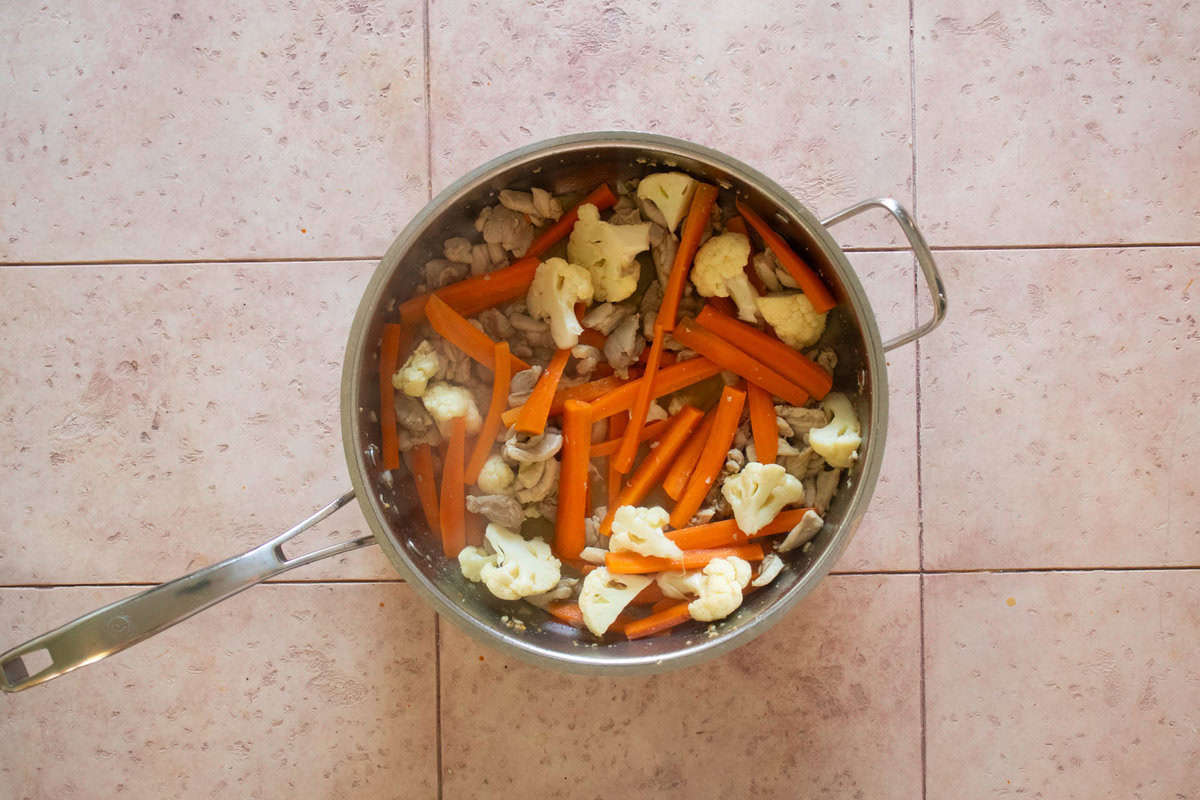
4. Sauce + Onion + Mushrooms + Cashews
Add the sauce and mix well, then add onion, mushrooms and cashews and stir-fry 2 minutes. Finally, add spring onion and turn off the heat. Let it sit for a minute, taste test, then serve with steamed rice!

How to Make the Best Cashew Chicken
Don't cook the veggies too long. You want the veggies to be crunchy, not soggy - especially the carrots!
Taste test and adjust seasoning if you need to. You can always add more of any of the sauce ingredients after the dish is finished, and even set them out on the table for everyone to adjust as they like.
What to Do with Leftovers
Leftovers: Leftovers are delicious and this dish stores well. It even gets tastier as it sits! However, the veggies will end up soggy after storing and reheating. To avoid this, you can cook them even shorter, especially if you're meal prepping and plan to reheat most of it anyway.
Storing: Store leftovers in the fridge in an airtight container for up to 4 days.
Freezing: Store leftovers in the freezer in an airtight container for up to 3 months.
Reheating stovetop: Stir-fry 4-5 minutes over medium-high heat, until heated through.
Reheating in the microwave: Reheat leftovers in the microwave in 1 minute increments, stirring between each segment.

More Easy Thai Recipes
- Shrimp Curry30 Minutes
- Fried Spaghetti with Chicken & Green Curry20 Minutes
- Authentic Thai Massaman Chicken Curry (Gaeng Massaman Gai)45 Minutes
- Larb Gai (Spicy Thai Minced Chicken Salad)15 Minutes
- Thai Curry Fried Rice with Broccoli & Mushrooms (Vegan & Vegetarian option)15 Minutes
- Spicy Chicken Noodle Soup25 Minutes
- Thai Salmon Curry30 Minutes
- 20-minute Almost Vegan Thai Ginger Coconut Soup20 Minutes
Recipe
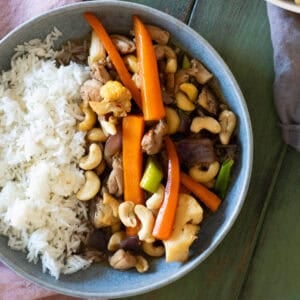
Thai Cashew Chicken
Print RateIngredients
- 3 tablespoon oil
- 4 cloves garlic minced
- 1 lb chicken thigh filets or other bone-less and skin-less cut of chicken; cut into bite-size strips
- 3 medium-sized carrots peeled and cut in matchsticks
- 1.5 cups cauliflower roughly chopped
- ¼ cup water
- ½ cup red onion roughly chopped
- 1 cup cashew nuts
- 2 cups white button mushrooms roughly chopped
- 2 spring onions roughly chopped, quite large pieces
Sauce
- 2 tablespoon light Japenese soy sauce for example Kikkoman
- 2 tablespoon fish sauce
- 4 tablespoon oyster sauce
- 1 tablespoon chili in oil "Thai chili paste", "chili in oil" or "crispy chili in oil"
- 2 teaspoon sugar
Instructions
- Start by making the sauce by mixing together all the ingredients for it in a small bowl.2 tablespoon light Japenese soy sauce, 4 tablespoon oyster sauce, 1 tablespoon chili in oil, 2 teaspoon sugar, 2 tablespoon fish sauce
- Heat the oil in a wok or other large pan over medium-high heat. Add the garlic and stir-fry 1-2 minutes until fragrant and browned, but not burnt.3 tablespoon oil, 4 cloves garlic
- Add chicken strips and stir-fry 2-3 minutes, until seared on all sides. It does not have to be cooked through at this point.1 lb chicken thigh filets
- Add carrots, cauliflower and water and stir-fry 2 minutes.3 medium-sized carrots, 1.5 cups cauliflower, ¼ cup water
- Add the sauce and mix well, then add red onion, mushrooms and cashew nuts and stir-fry 2 minutes.½ cup red onion, 1 cup cashew nuts, 2 cups white button mushrooms
- Add spring onion, mix well, then turn off the heat and let it sit for 1 minute. Serve immediately with steamed rice.2 spring onions
Equipment (may contain affiliate links)
- Wok, skillet or frying pan
- Measuring cups
- Garlic press* optional, you can also use a knife
Notes
Note on Sauces (And the Brands I Used)
Soy sauce (Kikkoman) & fish sauce (Squid Brand): For a truly authentic version you'd want to use regular soy sauce and a special "seasoning soy sauce". The latter is not something I can easily find, so instead I opted for Japanese soy sauce and fish sauce. I find this gives a more interesting - and less salty - flavor profile than using just soy sauce. Oyster sauce (Maekrua): This is a common ingredient for Thai Cashew Chicken and I highly recommend you use it. Crispy chili in oil (Lao Gan Ma): I love this chili product, so that's why I chose to use it for this recipe. You can also use Thai chili paste or "regular" chili in oil.Storing & Reheating Instructions
Leftovers: Leftovers are delicious and this dish stores well. It even gets tastier as it sits! However, the veggies will end up soggy after storing and reheating. To avoid this, you can cook them even shorter, especially if you're meal prepping and plan to reheat most of it anyway. Storing: Store leftovers in the fridge in an airtight container for up to 4 days. Freezing: Store leftovers in the freezer in an airtight container for up to 3 months. Reheating stovetop: Stir-fry 4-5 minutes over medium-high heat, until heated through. Reheating in the microwave: Reheat leftovers in the microwave in 1 minute increments, stirring between each segment.Nutrition
Nutritional information is approximate and automatically calculated, and should only be viewed as an indication.




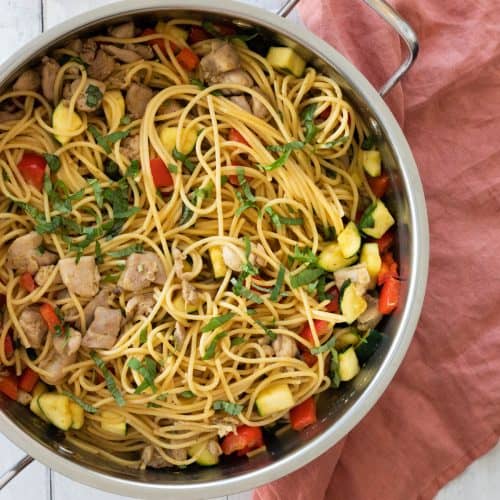


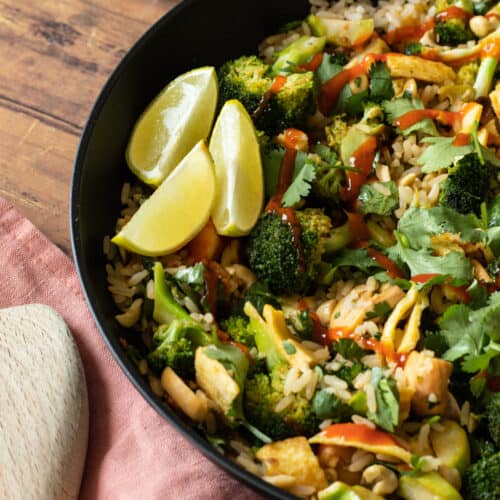
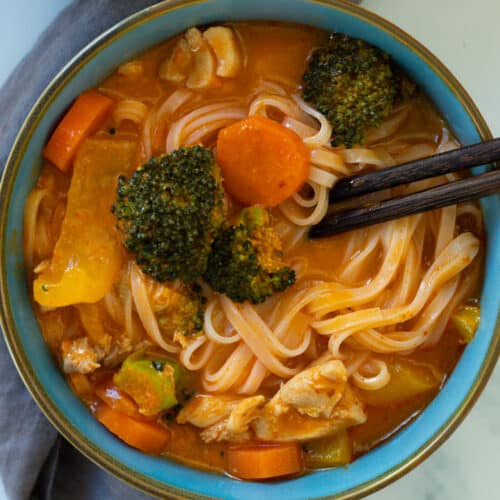
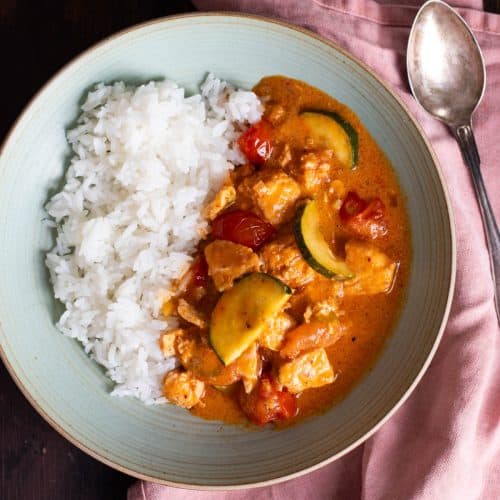


Comments
No Comments